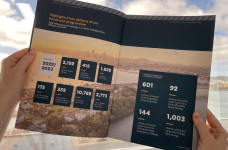Aotearoa New Zealand’s first Emissions Reduction Plan (ERP) released
Published 16 May 22
The ERP is a critically important plan that sets out how New Zealand will meet its first emissions budget – an interim target that limits our emissions to 290 metric tons of carbon dioxide equivalent (Mt CO2-e) between now and 2025. The plan also sets the path towards meeting our long-term emission reduction targets. It is a key step in the country's transition to a low emissions future, with roughly 300 actions that cover every sector of the economy.
ERP for housing and urban areas in New Zealand
Future emissions budgets will set smaller emission limits for five-year periods, helping New Zealand progressively reduce our emissions. For each emissions budget, there will be a new plan with policies and strategies.
The ERP is available on Ministry for the Environment website.
Emissions Reduction Plan(external link)
The ERP will have wide reaching implications for housing and urban areas in New Zealand, as it signals significant shifts in the transport, building and construction, and planning and infrastructure sectors. For example:
- the planning and infrastructure actions will support a shift towards planning and building low-emission urban areas; characterised by more mixed use, and medium and high-density development, with good access to jobs, amenities and services, and well connected by active and public transport. Resource Management reform is a key enabling action.
- the transport actions include a focus on reducing reliance on cars and delivering considerable change in walking, cycling and public transport. The transport actions set a target to reduce vehicle kilometres travelled by the light vehicle fleet by 20%, by 2035, and signals changes to the way we fund and invest in infrastructure. These actions can support wider Government objectives like housing affordability and livability.
- the building and construction actions include a focus on improving energy efficiency of new buildings and reducing the whole-of-life embodied carbon of buildings. It also proposes actions to enable Māori representation within the building and construction sector. These actions can also help to lift the quality of new homes.
Te Tūāpapa Kura Kāinga Ministry of Housing and Urban Development’s involvement
HUD is one of the agencies contributing to the ERP. Our focus has been on policies to enable the housing and urban development sector to reduce emissions and ensuring the proposals across the ERP will support our broader objectives around thriving communities where everyone has a place to call home.
HUD is a joint lead agency for the following ERP actions in the planning and infrastructure chapter:
- Support emissions reductions and climate resilience via policy, guidelines, direction and partnerships on housing and urban development.
- Address infrastructure funding and financing challenges
- Improve the evidence base and tools for understanding and assessing urban development and infrastructure emissions
- Identify ways to support the private sector to deliver lower emissions development.
Kāinga Ora also leads a key action in this chapter to:
- Promote innovation to reduce emissions through Crown-led urban regeneration projects, by identifying and aiming to pilot innovative approaches.
There are increasing expectations on government agencies to ensure their activities are contributing to the government’s emissions reduction goals. The Climate Change Commission (which provides independent, evidence-based advice to the Government on climate change) has indicated that housing and urban development will be an important focus for future emission reductions plans.
This plan focuses on how we can reduce emissions, but we also need to adapt to climate impacts that are already locked in. This will primarily be addressed in the national adaptation plan.
![[image] a street with housing down one side](/assets/Uploads/Meta/iStock-1249898931__FocusFillWyIwLjAwIiwiMC4wMCIsMjI4LDE1MF0.jpg)



